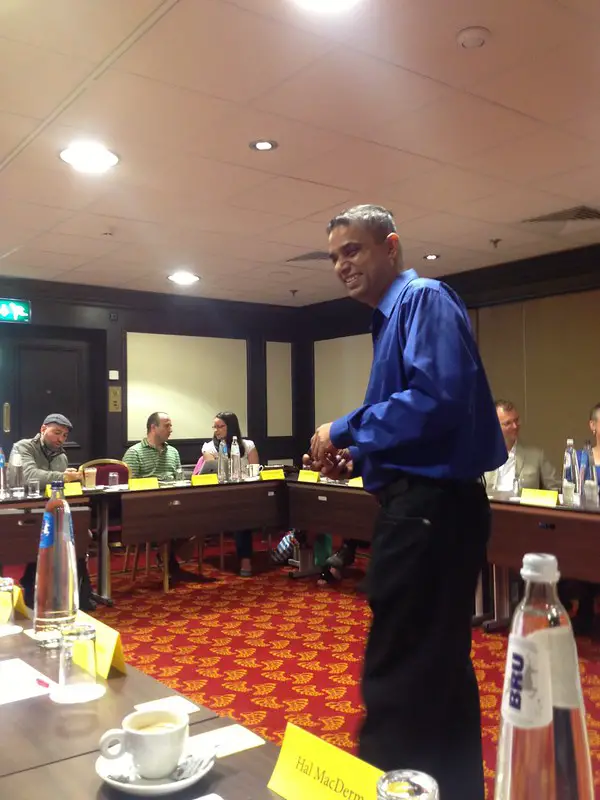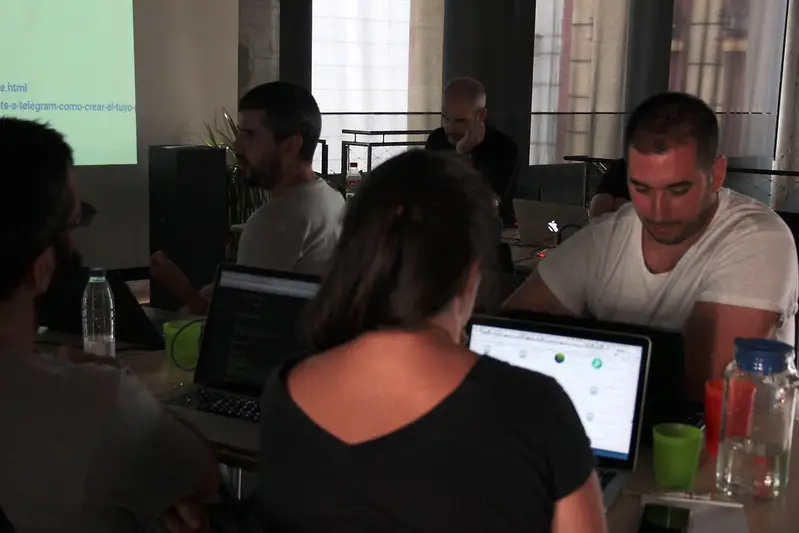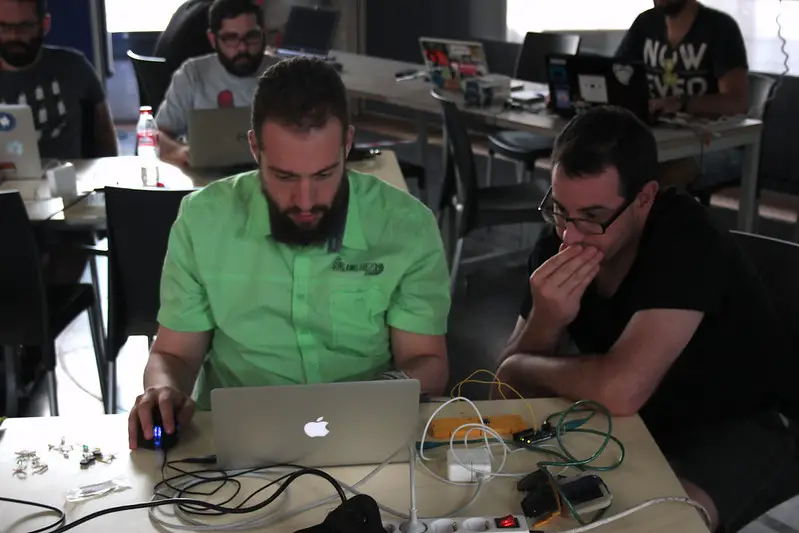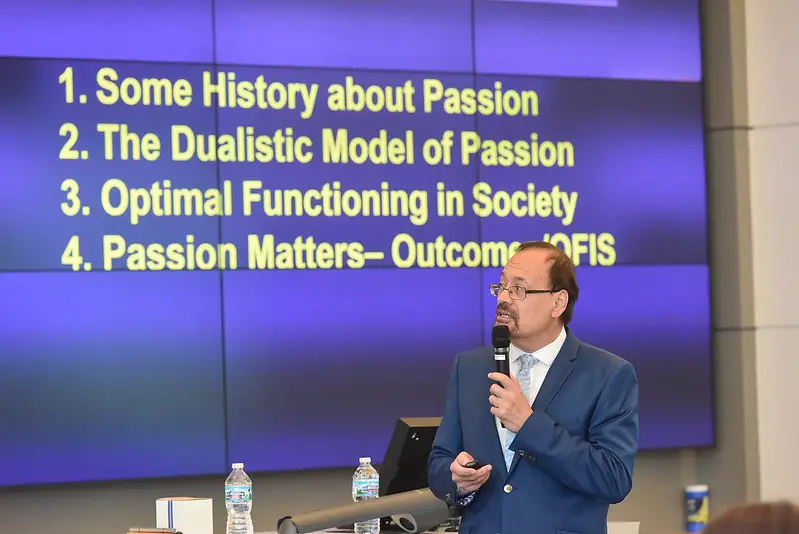When considering success in business, a lot of people reason big: huge products, large companies, and big CEOs –such as the iPhone, Bill Gates, and Amazon. Considering success in this manner makes it look rather intimidating. Nevertheless, your likelihood of beginning the next industry-successful giant, forming the next popular product sensation or turning into the next multibillion-dollar start-up founder are very thin.
However, do you truly desire to be that big? Do you wish for your life to revolve around earning money, looking for new markets and running huge organizations on an ever-increasing scale? Or would you prefer to be able to relish the freedom of having your own company without needing to give up your life on the altar of the “bigger is better” meaning of success? Would you prefer to be able to work a short number of hours yearly and use the remaining of the hours doing the other things you like, for instance, spending quality time with your family, traveling or chasing your hobbies?
If these questions make you fascinated by the idea of thinking smaller about success, then this book chapter is for!

Chapter 1 – Companies of one dismiss the idea of looking for growth for the sake of growth, embracing a more complete outlook of life.
The philosophy of modern capitalism can be summed up in one word: “more.”
There’s the average consumer on one part of the economic equation, who’s frequently pursuing to purchase more products and services to consume.
Then, there’s the average business on the other part, who is frequently pursuing to sell more products and services to increase its profits. The instant it gets a revenue goal, it sets the target even more– $1 million, then $10 million and so on.
In a nutshell, nothing is ever sufficient. Consumers and businesses similarly are motivated by an insatiable want for continuous consumption and growth – in general, at least. There are exemptions.
Taking part in the chorus of consumers who are attempting to restrict their consumption; also, few businesses are beginning to say “enough is enough.” Instead of infinite growth, they’re looking for a more satiable, steady, and sustainable method to growth.
By using self-restraint, these businesses can chase a financial goal that completely reverses the traditional corporate model. That goal is to earn: to get sufficient profits to allow their owners and workers to get the amount of comfort, freedom and free time that they desire their lives to have.
By changing that want into the center of gravity around which their jobs are concentrated, these businesses are able to revolve around the people who manage them, instead of the opposite. Those people come to be the businesses’ unit of measure – a unit of one. Maybe they entail a single owner-operator, a team of a few hundred workers or something there about; hence, we can call the companies of one.

Counterintuitively, while the majority of the businesses set ever-escalating growth aims, companies of one set firm growth limit to make themselves small. For instance, Sean D’Souza directs a company of one known as Psychotactics, which offers consultancy services. He set his growth limit for $500,000 in profit every year. Although he could earn more money if he needed to, he intentionally decided to limit his company to this profit goal.
Why not more profit? Well, to copy a popular line from rapper the Notorious B.I.G.: more money, more issues. So to say, more profits needs more customers, sales, and production, which, in turn, needs more workers, bureaucracy, and infrastructure. That entails more tiredness, mistake and work time, which entails less comfort, freedom and free time. And that overthrows the entire aim of beginning a company of one!
For his role, D’Souza would choose to be playing with his children and taking three-month breaks. If you feel the same, then a company of one might be the approach for you to go tool!
Chapter 2 – They are differences between companies of one, freelance kinds of self-employment or conventional small businesses.
A “company of one” might seem like an extravagant method of naming oneself a small business or a freelancer –however; there are significant differences between these three kinds of self-employment.
When a small business remains like that; it’s frequently seen as a limited success. Some small businesses are fine with that; however, a lot would like to grow their work, develop their incomes and be more successful, in the “bigger is better” meaning of success. If provided chances to grow bigger, a lot of small businesses would grab them without any delay.
On the contrary, companies of one would reject them if they’d already gotten to their growth limits. For companies of one, remaining small isn’t an indication of failure; it’s an aspect of their actual meaning of success: accomplishing and sustaining a self-defined level of income.
But, a company of one and small business both have a significant thing in common: both of them pursue profits. They invest a specific amount of money or time in their work, and they ultimately get more income from it, if everything goes well. Normally, that investment needs an upfront payment of labor. For a company of one, this could entail making t-shirts, making software or making an online learning course.
As soon as the products are completed, the company can begin getting money from them without having to do much extra work –particularly if they’re data-based ones that can be generated with nearly no extra labor.
On the other hand, a freelancer usually stops getting income the instant she doesn’t work anymore. She receiver a specific amount of money maybe every hour or for every piece of work, which needs a specific amount of time to finish. Anyhow, her time is money – and her money needs time.

Different from a company of one, a freelancer usually doesn’t receive profit from her product after she’s finished working on it. For example, a freelance web designer, can’t design one website and then sell it to various buyers; she only goes into a one-time transaction with her customer. When that is completed, it’s completed, and she goes on to the next client or work.
Whereas, a company-of-one owner might be off surfing while he’s still getting money for work he did last previous month!
Therefore, freelancing is really different from managing a company of one –however, the former can be a good advancement to the latter, as we’ll get to see in the following chapter.
Chapter 3 – Don’t resign from your work– grow your company of one out of a side gig.
From now on, we’re going to look at the method of beginning a company of one from start to finish, step by step. Also, we’ll examine some of the unique aspects, goals, and tactics of a successful company of one.
The first thing to do entails not doing a thing: that is, don’t resign from your daily work. Just like a lot of companies of one, your new business is most likely going to develop from a side gig. It has to grow into a sustainable business before you can change it into a full-fledged company of one and commit yourself to it permanent.
Think of Tom Fishburne, who was in the marketing field for about 20 years. During his spare time, he followed an interest he’d like ever since he was a child and that is cartooning. Initially, he only did it for fun. Then he began taking side gigs, drawing for customers during evenings and weekends.
He didn’t resign from his work to follow cartooning permanently until he’d formed a strong list of clients and saved enough money to form a runway buffer –enough savings to pay for his living costs in the situation of a slow one or two month.
That was the past seven years. From that point, he’s been earning double or even triples as much money as he ever earned while he was still a marketing executive, at the same time enjoying a lot of time with his family and doing something he likes– drawing cartoons for other firms that want to make use of them for marketing. This work is part of operating Marketoonist, a company of one established in his peaceful, sunny house in Marin County, California.
Tom manages the company together with his wife, and at times they hire freelancers on an as-needed basis –however, that’s as far as their growth has gone. Tom has a waiting list of customers; therefore, they could probably earn more money if they grow their jobs more.

However, Tom and his wife don’t want to turn into the next corporate giant. They only want to have fun with their lives. According to Tom, that entails cartooning – not running a huge workforce or a system of satellite offices.
The story of Tom shows us a significant important lesson: if more expansion would mean making compromises that are not acceptable to you, then that’s an obvious indication sign that your company of one has gotten to its growth limit!
Definitely, at this point, when you’re only forming a side gig, you still have a long way to go on being concerned about attaining a lot of growth. Therefore, remembering Tom’s lesson, let’s examine the next phase in your path.
Chapter 4 – Change work into a passion instead of the opposite.
Now that you’ve fought the desire to resign from day work, what’s the next phase in chasing a side job that can develop into a company of one?
Firstly, you have to look for the gig if you don’t already have one. At this stage, your first preference might be to pay attention to the normal suggestion of business writers and speakers: chase your passion.
There’s only a small issue with that advice. Except you are passionate about something that’s an in-demand, marketable skill, going after your passion is most likely not going to be a financially feasible choice.
The majority of the people’s passions are not in sync with the demands of the market. Think of a study that was conducted in 2003 by Robert Vallerand, a professor of psychology at the University of Quebec. He questioned the students of his university, “What are your passions?” instead of their majors, the majority of the students replied with “sports, music or art.” Still, these areas signify just 3% of total jobs; therefore, it would not be possible for the majority of the student to successfully chase these passions.

This reality is as serious as it is significant to remember. Say your passion might be playing tennis –however, you’re most likely not going to be the future Serena Williams. The same applies to other passions requiring activities that just a small percentage of people can get income from doing.
You need to be realistic. Question yourself, what’s that thing that you’re really good at doing already and that other people will be willing to pay you to do? If the reply to that question is “nothing,” then what could you improve at doing and change into a marketable skill?
The answer was web designing for the author. Although, he didn’t feel passionate about it; he only worked at a design agency, and he’d become better at his work.
While leaving the agency and beginning a web-design company of one, he developed his skill set and got better and better at fixing his customers’ issues. This gave him a feeling of fulfillment and interest in doing the work and seeing the outcomes – a feeling that’s a kind of passion!
Meaning, do not wait for a financially feasible career path to miraculously come out from your passion; rather, concentrate on finding and developing a marketable skill set now, and let your passion to begin from the process of improving, mastering and assisting other people with it.
Chapter 5 – Target a particular audience and discover your niche.
In knowing and improving a marketable skill set, you might make a usual guess: the more people who desire the product or service that your ability offers, the better. Nevertheless, the more the market, the more potential customers.
However, by attempting to please everyone, you can eventually end up not pleasing no one. That reason is that targeting yourself at the lowest common denominator entails making your product or service as widely pleasing and so as generic as possible, which reduces your product’s appeal.
Even big companies can be affected by this. For instance, Starbucks initially placed itself as a series of stores that gave people the experience of going to a local, boutique coffee shop.
However, during the mid-2000s, with more Starbucks stores coming up on apparently all street corners, and with more products on offer within them, the experience of going to a Starbucks became somewhat weak. High-quality coffee started to be outshined by sandwiches, CDs and an abundance of extravagant drinks, and its previous appearance of local charm was disproved by its universality.
Overstretched, the company started to struggle. At the end of the decade, it had shut down close to 900 stores. From that point, it’s scaled back and concentrated back on its initial goal, having learned the difficult way that you can’t be all the things to everybody
If that’s not okay to talk you out from pursuing a large audience, think of the fact that bigger markets entice bigger masses of competitors, which makes it harder to be unique.

Therefore, search for a niche rather. The smaller and more precise your target audience is, it will be very easy to connect and form trust with your target audience. Also, the more different their wants are, the easier it’ll be to learn how to fulfill their want. This will enable you to charge premium costs for your extremely skilled, excellently delivered products or services.
That is exactly what Kurt Elster a successful e-commerce consultant did. Rather than giving universal consulting services to every e-commerce business (a very mass audience), he’s enlarged his income eightfold by setting himself as a consultant who works solely with businesses that make use of the Shopify e-commerce platform.
Consider it like this: if you manage a business on Shopify, who would you employ as a consultant, a generalist who asserts he can work with anybody– or a specialist such as Elster who’s very conversant with the platform you use?
Chapter 6 – You should accept the influence of personality and simplicity.
In order to toughen the center of your product or service more, there are two more tactics you can chase.
The first tactic is to accept the power of simplicity. For you to see this power working, think about the small company known Casper, which sells mattresses online. At the moment, mattress companies are very common–therefore, what makes Casper stand out?
Well, to start with, its target audience isn’t everybody; it’s frequently younger people who desire to sleep better during the night; however, they don’t want the stress of going to a physical mattress store. Then, there’s the manner it provides its services: however a lot of its rival’s offer customers with a vast number of choices, Casper produces just three types of mattresses.
By narrowing its target audience and simplified their choices, Casper then gives a direct offer: improve your sleep by purchasing a better mattress online, evade the stress of going to a physical store and rest easy in the understanding that you can take it back for a complete refund if you don’t like it after using It for100 nights.
The second tactic entails more amplifying that uniqueness by maximizing your most powerful asset: yourself. You’ll require all the assistance you can get from it, since even in the smaller pond of a specific niche, you may still look like a small fish compared to your rivals, who may be larger, well-known companies.
Luckily, you can make use of your obvious disadvantage to your advantage. True, you’re only a person –however, by the same token, you possess an exceptional personality, which lets you brand your business, product or service in the same unique manner.

For you to do this, take a part of your personality and add it to both your work and the messaging that surrounds it so it can be in everything you do – from your product design or service delivery to your tweets, emails, and discussions with your customers.
Once again, simplicity is important; you should capable of describing your personality-driven product with basic adjectives, like “competent,” “sincere,” “rebellious,” “youthful,” “elegant” or “exciting,” which you can add a unique twist – one that’s a genuine representation of who you truly are.
Bear in mind that: your competitors can give the same abilities, products or services; however, they can’t copy your personality, and your personality is what’s going to make you different from the multitude–therefore, let it shine!
Chapter 7 – Gain knowledge from your target audience and form connections with them.
Say you’ve known your target audience and acquired a marketable skill set, you’re now ready to offer a product or service for which they would be eager to pay money for. You only have to persuade them to take advantage of your skills!
Definitely, that’s easier said than done, and there’s an entire process required in getting to that point. Firstly, you have to connect with your audience and learn about what they need, in order for you to know how to satisfy them. One method to do that is to contact likely customers and give them free, a no-strings-attached consultancy.
For instance, if you were attempting to create a web-design side work that could grow into a company of one, you could start by looking for people who were searching for a web designer or had got one already. By discussing with them about their experiences, you could learn much beneficial information, like the way and places in which they’re looking for web designers, the reasons behind their employing choices, the aim they’re attempting to satisfy, the issues that caused bad customer experiences and their questions on the web design process.
By responding to those questions, you could then start to set yourself not only as a consultant; however, also a trustworthy authority in your field – someone with relevant knowledge from which other people can gain and on which they can rely.
However, once again; at this point your service is free; you’re not even giving or attempting to subtly push your services. You’re honestly only trying to assist your audience, in small; however, significant means.
The term “small” is important here. You’re not redesigning a person’s whole website for free or something like that. You’re only giving solutions to questions, and advice, second views, brainstorming sessions and so on– mini-consultations, you could say.

While doing this whole thing, you’re both learning about your audience and forming a reputation– and creating mutually beneficial connections with them. Certainly, at the end of your small-consultations, they’ve already assisted you, and you as well have assisted them, and you still you haven’t even done any paid work for them yet!
Forming these relationships and showing their value, who do you consider that your audience will go to when next they have to pay for a web design service: a stranger – or you, someone they know already and trust as an authority in the field?
According to the author’s experience, the answer to the question was the latter; almost everybody with whom he consulted processed to want to employ him.
Chapter 8 – Evade huge upfront investments, and strive to make a profit as fast and cheaply as possible.
As soon as you’ve formed your relationships, authority, and reputation with likely customers, you’ve gotten to the point where you can begin doing “real” business and really earn some money. Therefore, it is now time to put the pedal to the metal –resigning from your work, leasing an office, requesting fancy business cards and so on, right?
Well, pause. You have to keep your work until your early business is more grown-up, and you have to really reconsider making any huge investments in it.
They’re most likely pointless. A lot of technological advancements lets you avoid huge investments that would have been essential for the past. A remote contractor can offer you the duties of an IT department. Free analytics software lets you acquire valuable understandings into your website visitors without employing a cyber guru.
If you really have to make huge investments, then your strategy is most likely excessively lavish. You have to be reasoning and acting smaller at this point. As a future company of one, your aim isn’t to behave like a traditional start-up that makes large upfront investments in the expectation of getting even massive profits in the far future. Your aim is to turn into a profitable business as fast and cost-effectively as possible.

The reason is that different from a conventional start-up, you can’t depend on external investors putting in huge amounts of capital into your company. Eventually, that’s a good thing, since it enables you to be very more independent than a start-up, which is indebted to its investors and has to get their consent before altering directions. However, it also entails that you don’t have the extravagance of burning through money while you take months or maybe years to start making money.
The more time you use getting set up to earn cash, the more time you’re not making a profit from your business. And the more money you spent on setting it up, the harder it becomes to earn money. Nevertheless, the bigger your upfront money, the more the income you have to make to break even, let alone earn a profit.
So, it is vital to squash a sellable product or service as fast and cheaply as you can. It doesn’t have to be flawless –only good enough to get the ball rolling!
As soon as it’s operating, your business can then begin to develop through a steady snowball effect, which we’ll examine in the following chapter.
Chapter 9 – Let your business gradually develop through a snowball effect, and put in investments as it develops.
Your first product or service will most likely be a very simple situation: only small customers, projects or sales from a small-scale product run. However, those small customers, projects or sales can bring about more customers, projects or sales, which can bring about even more of them, and so on, causing a snowball effect.
That’s was the case for Alexandra Franzen, who quitted her job in radio broadcasting to turn into a professional writer nearly ten years ago. She didn’t prosper instantly; at the start, she only got just three projects. However, each of those projects brought up another and then another, as her first customers appointed her again or suggested her to new customers. Moving on to now, and she has a lot of customers and projects that she has a nearly year-long waiting list!
Something similar occurred when Jeff Sheldon established Ugmonk, a small and extremely successful clothing company. With the assistance of a $2,000 loan, he produced only four t-shirt designs and made a small run of just 200 shirts, which sold out very fast

The success of the initial run brought about a second and then a third run, and he was able to refund his loan and turn a profit nearly straightaway. While remaining to depend on the payment of his day job, he invested that profit back into his company, which enabled him to finance more production without extra cost to himself.
During the first two years, he managed Ugmonk out of his apartment. Just when he required extra space did he invest in a warehouse, which takes us to another significant point: it’s fine to make bigger investments in a company of one –however, just when the time is appropriate and they’re essential.
Rather than attempting to anticipate all the things you might require one day and invest in it upfront, only add new tools, infrastructure, software, contractors or anything the case might be as your needs occur and your income allows.
However, bear in mind that, as a company of one with an intentionally limited size of works and level of profit, you’re going to need to fulfill a lot of your business needs yourself. For instance, different from a big company, you can’t only assign your marketing to a marketer or your customer service to a customer service representative. You’ll need to turn into a jack-of-all-trades and do most of these things on your own.
Chapter 10 – Concentrate on customer service and client retention.
When you begin on the route of forming a company of one, your key competitive advantage is the great smallness of your enterprise, which lets you to be really friendly with your customers and to concentrate on offering them with fabulous customer service.
As your company develops, you might be tempted to reduce that friendliness and service –however, you do that at your risk. Nevertheless, your friendliness is a huge aspect of what makes your company attractive – and it’ll be difficult to persuade people to continue sending you money way if they don’t like you anymore!
Also, customer service is important to succeeding in this present economy. As stated by a new survey done by the marketing research firm Harris Interactive, nine out of ten Americans are enthusiastic to use more money on companies that offer great customer service, and 79% of them have rejected a purchase as a result of bad service.
Bigger companies are also at risk of losing clients as a result of their lack of friendliness and service; however, a lot of them are okay with that since they use a churn and burn method to their clients. These methods can be summarized as follows: acquire as many new clients as you can, and squeeze some money from them as fast as you can. If they are not satisfied with you and leave, well– just look for more customers to change them and squeeze some more money out of them.

Asides from the questionable ethics of that method, it’s also not a feasible method for a company of one. When your budget is little, customer retention is significant, since consumer research done by Econsultancy and Responsys reveal that it can cost five times as much to include a new customer than to retain an old one. Also, there are the opportunity costs of customer reduction. According to a study done by the White House Office of Consumer Affairs; averagely, a loyal customer’s following acquisitions make him worth ten times the cost of his first acquisition.
Lastly, the gladder you retain your clients, the more likely they are to recommend you to other people. According to a study conducted by Verizon and Small Business Trends, those word-of-mouth referrals are the key manner that small businesses get new customers. Certainly, they’re really strong that they’re five times more efficient than paid online advertisements when it comes to enhancing sales.
Therefore, accept your company’s smallness and keep treating your customers like friends; as your greatest likely allies, they’ll more than pay back the favor!
Company of One: Why Staying Small Is the Next Big Thing for Business by Paul Jarvis Book Review
Companies of one are a small-scale business enterprise that intentionally remains small for them to give their owners a sustainable revenue, a high level of independence and a good work-life balance. Good progress to beginning that kind of an enterprise is Freelancing, and you can form one by maximizing the power of a marketable skill set, a niche audience, equally helpful relationships, simplicity, personality, technology, and good customer service.
Use the lessons from a Company of One to other aspects of the business.
You don’t need to be a real company of one to behave as a company of one. Large-scale companies can use some of the exact principles, and people within those companies can use them to their work as well. For instance, the notion of getting a feasible product or service to the market as fast as possible will profit both a tech-industry giant at large and a specific programmer working in it. If you work for a bigger company, question yourself: How can the other principles of a Company of One be used to your business or work?
Download Pdf
https://goodbooksummary.s3.us-east-2.amazonaws.com/Company+of+One+by+Paul+Jarvis+Book+Summary.pdf
Download Epub
https://goodbooksummary.s3.us-east-2.amazonaws.com/Company+of+One+by+Paul+Jarvis+Book+Summary.epub
